As Georgia residents were assessing damage from Irma, Tybee Island reopened allowing people to return to their homes, while evacuees from Florida raced to do the same.
By 3 p.m. Tuesday, about 996,000 people were still without power, down from 1.1 million around lunch time. Dozens of metro Atlanta roads were still closed due to downed trees and power lines.
In Glynn County, officials said they were trying as fast as possible to let residents come back, but they declined to estimate when the battered county would open for those who fled Irma. Flooding left the coastal county closed “until further notice,” with St. Simons Island cut off from the mainland.
"This has been a roller coaster of epic proportions," county chairman Bill Brunson said during a news conference with our officials near Brunswick. "We know you're anxious, but we've got to get you back safely. ... Right now we feel like our community is not safe."
Chatham County reopened Tybee around midday and residents returned to a soggy mess. Power is still out.
In metro Atlanta, officials pleaded for motorists to stay off roads as the downed trees and power lines made for precarious driving in some areas. A few schools systems, including Cobb County and Marietta City schools, decided to reopen Wednesday. But several more districts — still dealing with power outages and storm damage — were forced to remain closed another day.
RELATED: Irma storm victims face issues: flat tires, insurance claims
MORE: DeKalb, Clayton among metro school districts to close Wednesday
By midmorning, I-75 south out of Atlanta was carrying twice the normal load of traffic for a weekday: the mass return of evacuees has begun. The Georgia Department of Transportation said state highways are blocked at 236 locations and urged evacuees to wait another day.
“If you’re headed back, you really need to know what you’re headed back to,” said GDOT spokeswoman Natalie Dale. “A lot of these places in South Georgia and Florida have no power. There are gas shortages. If they get to South Georgia or north Florida and they run out of gas, there’s a good chance they will not be able to get gas.
“If they can wait one more day, they’re going to be headed back to a much safer area,” she said.
The storm took at least three lives. Two people were crushed by falling trees in north metro Atlanta. A South Georgia man was swept off his roof by high winds.
More than 100 flights into and out of Hartsfield-Jackson Atlanta International Airport were canceled Tuesday morning, after more than a thousand cancellations the day before.
Some metro cities and counties began to post lists of closed roads:
- Google map of Gwinnett road closings. Here's the AJC's latest report from Gwinnett.
- DeKalb road posted a three-page list as of 5:30 a.m. Here's the AJC's latest DeKalb report.
- Sandy Springs this morning said 33 roads are closed and asked everyone to stay off the roads.
- Cobb county officials also asked people to stay off the roads but said the county emerged from the storm remarkably well. "We've got a lot of debris to clear off today," said Transportation Director Jim Wilgus. "Overall, we were expecting it to be much worse."
RELATED: Gov. Deal warns that recovery will take time
RELATED: Wife of ex-police chief killed when tree falls on car
By 5 a.m. Tuesday, Irma was a tropical depression with maximum sustained winds of 35 mph; the storm’s center stradded the Georgia-Alabama border near West Point. But it was expected to continue moving northwest into Alabama and onward to western Tennessee late in the day.
“The big wind is done,” said Channel 2 meteorologist Karen Minton, who said rains in Atlanta will be tailing off toward noon. “We might even see some breaks in those clouds late this afternoon.”
Credit: Branden Camp
Credit: Branden Camp
As of 9:30 a.m. Tuesday, power was still out for about 470,000 customers in metro Atlanta, according to outage maps from Georgia Power and the state’s electrical membership cooperatives.
The total, 1.14 million statewide as of 11 a.m., was down from nearly 1.5 million on Monday as utility crews swarmed over the state, working hard to get the lights back on.
MORE: All the latest news and information on Irma
MORE: Day 2 in Gwinnett--road closures, power outages and more
DeKalb County had 144,000 customers without power as of 11 a.m., according to Georgia Power’s outage map. Electricity was still out for 100,000 customers in Fulton; 33,000 in Gwinnett; 38,000 in Clayton; 22,000 in Hall; and 2,600 in Cobb. The EMC outage map shows an additional 131,000 customers out in metro Atlanta, but it doesn’t break down the total by county.
Irma prompted a number of firsts for Atlanta and Georgia:
- Atlanta had never been under a tropical storm warning before.
- No governor had ever declared a state of emergency in all 159 Georgia counties before Gov. Nathan Deal did so in advance of Irma.
- MARTA had never suspended both bus and train service as it did on Monday.
MARTA's rail service was back on its regular weekday schedule Tuesday afternoon.
Credit: Dash Coleman
Credit: Dash Coleman
On the coast, anyone who even tried to leave St. Simons was stopped by Glynn County police Monday night and ordered to figure out a way to stay, because the causeway leading back to the mainland was closed after being covered in water.
The county was even asking residents not to shower, because sewer capacity was stretched so thin.
It took several hours for the ocean to recede from St. Simons beaches. When it finally did, it was clear the tide had made it at least 100 yards on shore, carrying the remants of docks and sprinkler systems and rocking chairs.
The decision to close access to Glynn — only hospital workers with the proper ID were to be let in — drew some flak on the county emergency management agency’s Facebook page.
“This was crazy,” said one post. “We went to Jesup to eat and tried to come back and I guess in that time frame this announcement was made. So we left to eat, then the guys blocking 341 off wouldn't let us back in.”
The only way to get to or from Tybee Island Tuesday was by boat or helicopter.
“We know that we have many people who want to get off the Island — as we have no power — and many, many more trying to get on the Island,” said Mayor Jason Buelterman in a social media post.
The city’s 911 system is down as well.
“This is a rough day for our community but we will work to get through it all together,” Buelterman said.
Credit: Stephen B. Morton
Credit: Stephen B. Morton
In Atlanta, meteorologist Minton said the high winds of Monday had turned into the breezes of Tuesday — a likely maximum of 17 mph in the metro area today, compared with gusts up to 64 mph Monday. She said the winds would trail off to 10 mph or so by day’s end.
But the widespread power outages and road closings complicated the commute on Tuesday morning. Some traffic lights in metro Atlanta were blinking red, some weren’t working at all.
People were urged to stay off the roads if possible.
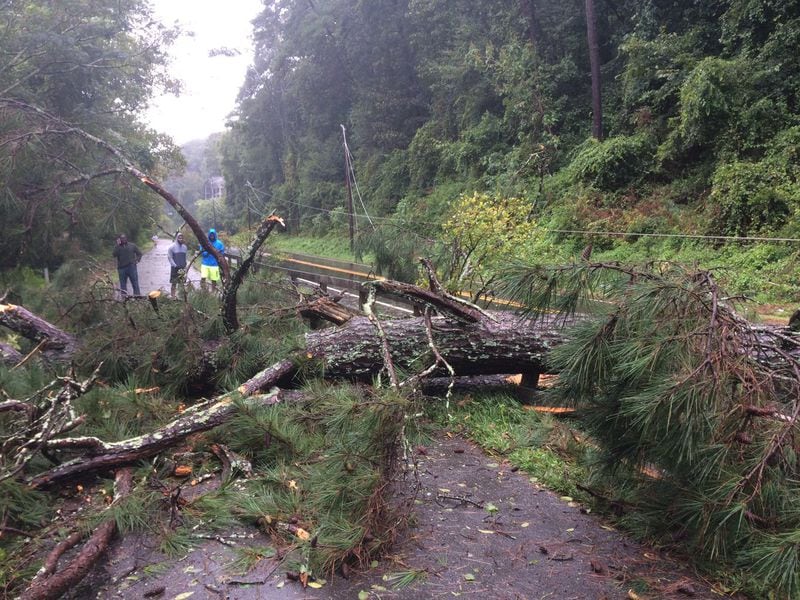
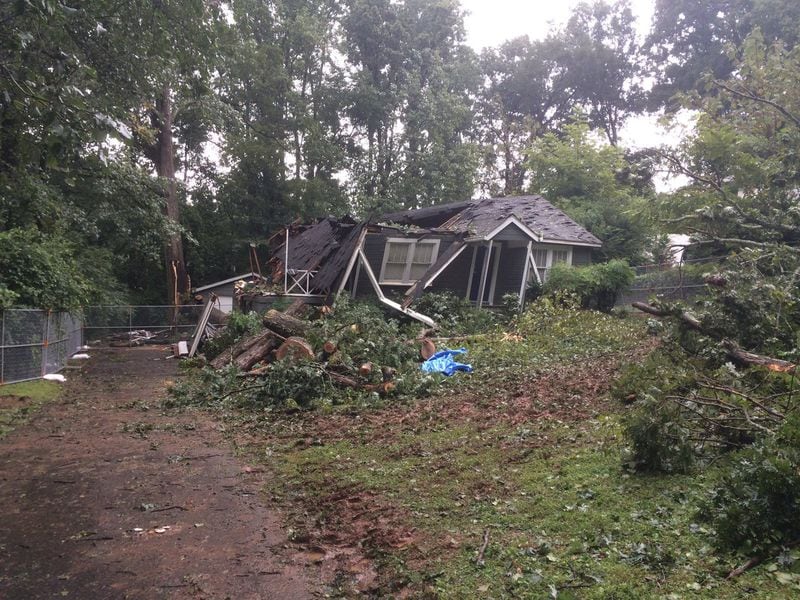
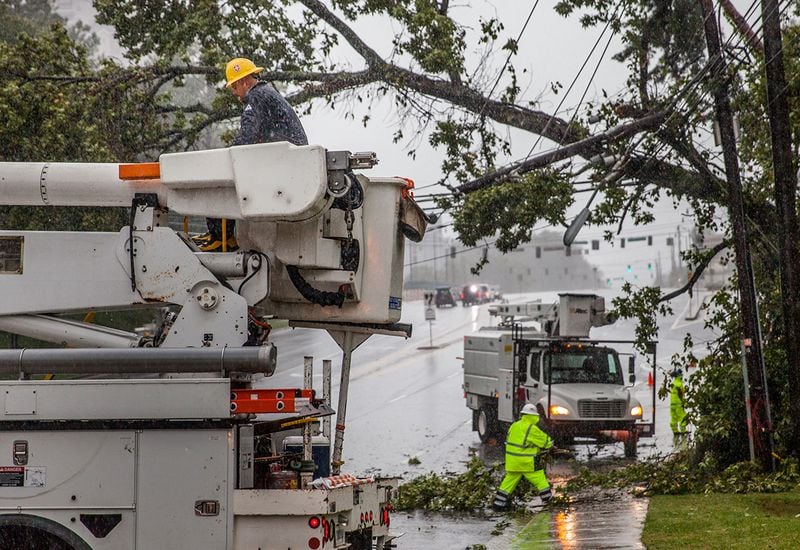
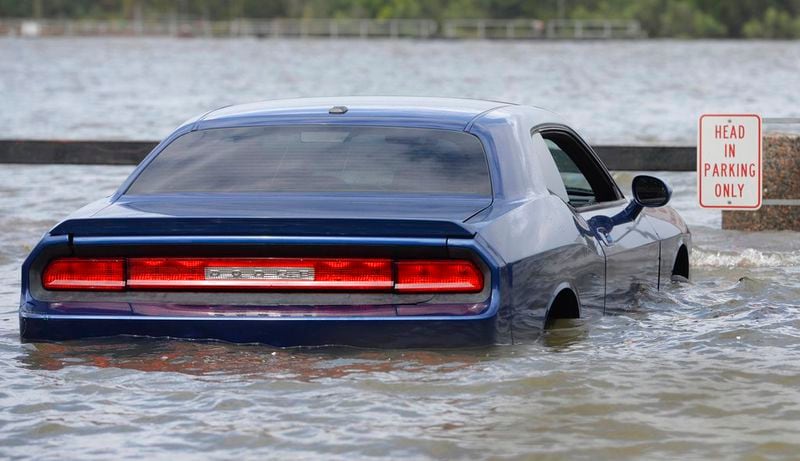
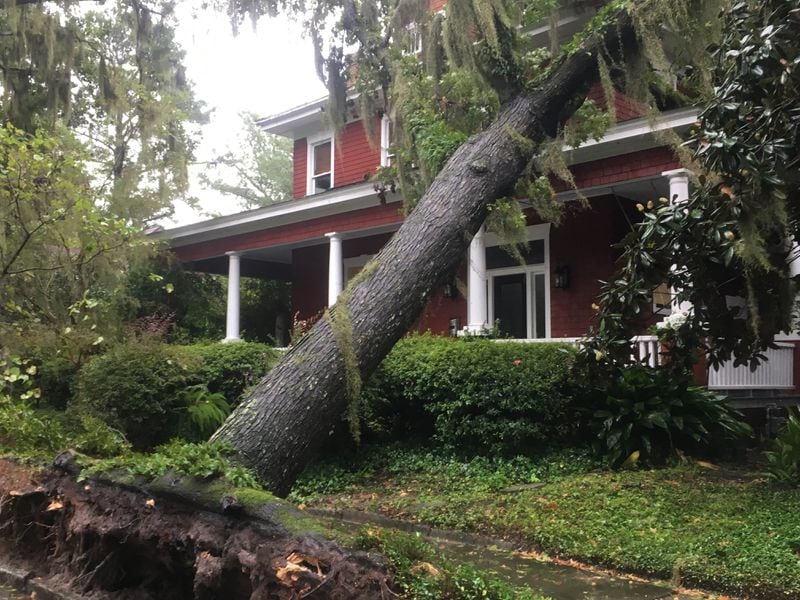
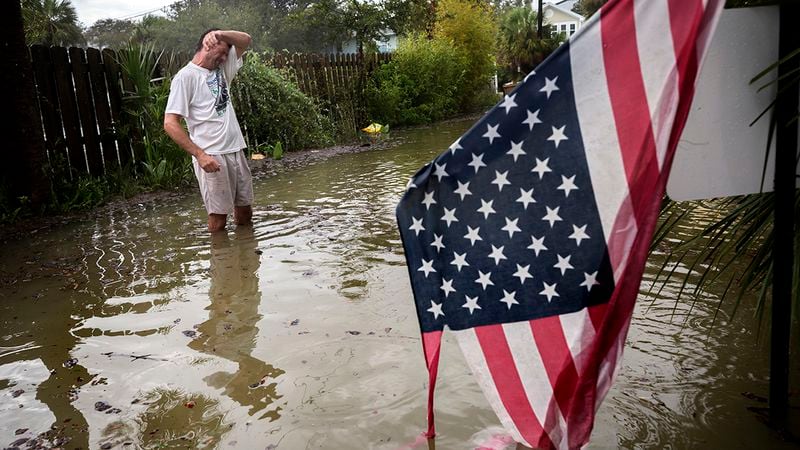


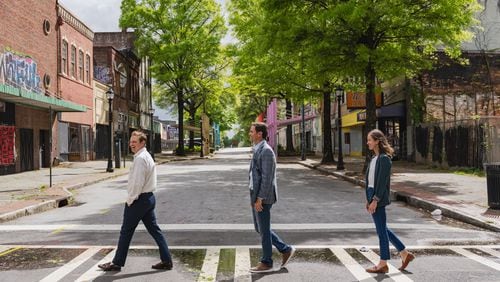
/cloudfront-us-east-1.images.arcpublishing.com/ajc/P7DYBH6TO7FEKG4SUXQQKADRXE.jpg)



